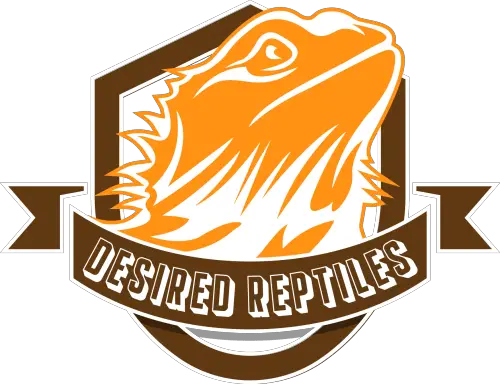Bearded dragons display signs that inform us of their cognitive and physical well-being such as head bobbing, feet stomping, darkening the beards, or waving. If you pay close attention, you’ll recognize behavioral patterns and comprehend your dragon’s quirky mannerisms. Aside from helping you bond better, understanding your pet’s behaviors allows you to pick up on the difficulties it may be going through and provide it with the necessary help in time.
Bearded dragons wave when they’re threatened, but unlike head bobbing which is a more aggressive response, arm waving indicates submission. Your bearded dragon has sized up the challenge, and in turn, submitted before the wrangle even began.
If you’re wondering why your pet is waving, you’ve come to the right article to ensure it’s not in danger. Let’s get right into it!

5 Major Reasons Why Your Beardie Is Waving
If you notice your bearded dragon waving at you or within its environment, here are the possible reasons why:
1. Your Beardie Is Submitting To A Potential Threat
Bearded dragons are highly solitary and competitive, even with entirely different species. They will submit to you, other pets, or another bearded dragon when they feel threatened or overpowered. Beardies may even submit to inanimate objects like wallpaper patterns or art pieces if they perceive it to be frightening. By waving its forearm, it signifies that it’s not interested in a fight over hierarchy.
2. Your Beardie Feels Trapped
If your dragon’s terrarium is unsatisfactory, it will wave in hopes that the enclosure will ‘let it out.’ This isn’t the most common reason for waving, but it does happen occasionally. Sometimes, accompanied by this behavior, your beardie will surf the glass (scratch and rest against the walls of the enclosure), run around in circles, and be skittish.
3. Your Beardie Is Afraid Of You
If your beardie is waving at you, it is scared and is letting you know that it doesn’t want a fight when you pass by. This can be a result of several things: perhaps you have adopted a dragon with a rough past, or you have been putting your pet on edge by sneaking up on it, holding it in ways it doesn’t enjoy, or consistently making loud noises when you come around it.
4. Your Beardie Is Afraid Of Its Reflection
Bearded dragons are highly competitive. When two beardies meet in the same space, they will duel over everything. During such a fight, the weaker beardie will submit to the dominant one by arm waving. If your beardie can see its reflection on the glass of the enclosure and considers itself weak, it may perceive the reflection as a threat and thus, wave to show submission.
5. Your Beardie Is Ready To Mate
When it’s time to mate, your female beardie will wave at the male to signify acceptance and submission. While mating, the female beardie will wave more aggressively, similar to tapping out during a wrestling match, signaling the male dragon to let her go. If you have a male and female beardie, you are possibly witnessing a mating ritual.

What To Do If Your Beardie Is Waving: How To Solve The Problem
Now, it’s clear that when your beardie waves, it is uncomfortable. But what can you do to help out the situation? Here are four things you can do to help your beardie relax:
Change Your Beardie’s Environment
Simply moving the terrarium can go a long way in helping your beardie feel safe. It could be that the enclosure is too exposed to a window where birds frequently visit. Remember that birds are natural predators of small reptiles, and this could cause your beardie to be anxious.
Get Your Bearded Dragon A Bigger Terrarium
Ideally, an 80-gallon or larger tank is suitable for an adult beardie. I always recommend that beginners start with a big tank (view on Amazon) as it saves money, time, and energy. Bearded dragons grow fast, and before you know it, your beardie has grown too large for its “beginner-friendly” enclosure. This could cause it to get stressed and then wave in response.
Keep Your Other Pets Away From Your Beardie
Bearded dragons will perceive anything they don’t understand as a threat until they feel comfortable around it. So, if you have cats and dogs running around, your beardie might occasionally wave, signifying that it does not want to be touched or bothered. Keep other pets away at least until your beardie trusts them and grows comfortable interacting with them.
Manage The Reflection Inside The Terrarium
If your beardie can see its reflection, it could perceive it as another dragon and thus, wave in submission. Reduce the reflections by covering three sides of the enclosure with wallpaper and increasing the light outside the terrarium to match the intensity inside.
How Does A Bearded Dragon Wave?
Bearded dragons wave by raising either of their forelimbs and holding it up in the air. They may very slowly wiggle the limb or flail it at their sides like a pedal or a wing. It’s honestly difficult to miss and somewhat funny to witness! If a beardie raises its hand in a wave, you’ll notice the behavior immediately.
Should I Be Worried That My Beardie Is Waving?
The only time you should be worried about your beardie’s waving is when it becomes excessive or when your pet displays other symptoms of illness such as a loss of appetite or weakness. As long as its environment is properly maintained, there shouldn’t be anything off-putting. If your dragon keeps waving despite having its needs met, take it to the vet for a proper examination as it could be in pain.
The Wrap Up
After this article, you now understand the reasons why beardies wave and how you can help the situation. Bearded dragons are individual creatures; each has its own personality causing them to behave and respond to situations differently. Your beardie may just be skittish and wave more than necessary.
If you suspect that your pet is waving for a more distressing reason other than submission, ensure you go to your vet for a professional check-up. Good luck!
